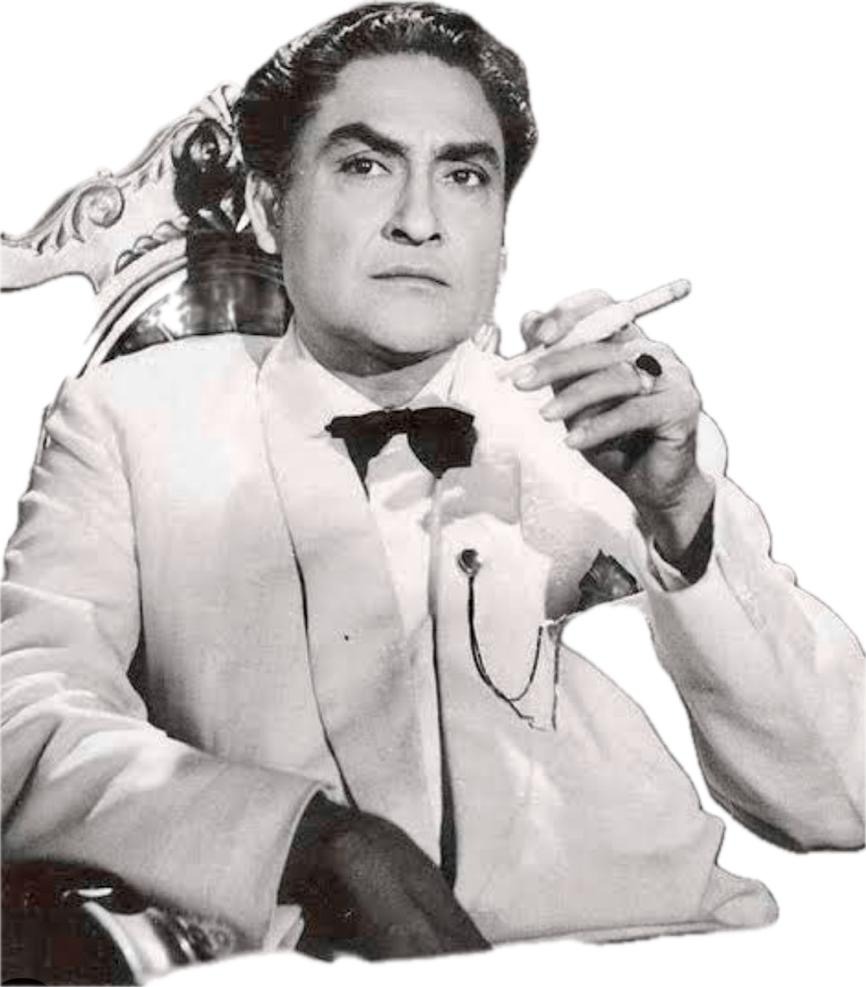Ashok Kumar: Pioneer, Superstar, Mentor – The Journey of an Iconic Indian Actor

Introduction:
Indian cinema, a vibrant tapestry of culture and storytelling, owes much of its legacy to the iconic Ashok Kumar (born Kumudlal Ganguly; 13 October 1911 – 10 December 2001). This luminary figure not only achieved legendary status but also played a pivotal role in shaping the trajectory of Hindi cinema. In this blog post, we delve into the life and career of Ashok Kumar, exploring his early years, illustrious career, and lasting impact on the film industry.
Background and Personal Life:
Born to a Bengali Hindu Brahmin family in Bhagalpur, Kumar’s journey began in the Bengal Presidency of British India (present-day Bihar, India). His family, part of the cinematic Ganguly lineage, included notable figures like his sister Sati Devi and brothers Kalyan (Anoop Kumar) and Abhas (Kishore Kumar). Despite facing personal tragedies, including the loss of his siblings, Ashok Kumar maintained a middle-class outlook and a harmonious marriage with Shobha. Together, they raised a family that would extend its influence across generations, linking Ashok to the popular actress Kiara Advani.

Education and Early Career:
Educated at Presidency College in Kolkata with initial aspirations of becoming a lawyer, Ashok Kumar’s path took an unexpected turn. His introduction to the world of cinema occurred when he worked as a laboratory assistant at Bombay Talkies, a renowned film studio. Influenced by the realm of filmmaking, he convinced his father of a career shift, adopting the screen name Kumar. His acting debut in Jeevan Naiya (1936) marked the beginning of a journey that would redefine Indian cinema.
Stardom and Pioneering Roles (1940s):
The 1940s witnessed Ashok Kumar’s ascent to stardom, characterized by his portrayal of the first anti-hero in Indian cinema in the movie Kismet (1943). This groundbreaking film shattered box office records, grossing 1 crore and making him the first superstar of Hindi cinema. Subsequent successes like Chal Chal Re Naujawan (1944), Mahal (1949), and Sangram (1950) solidified his position as a bankable star.

Transition to Mature Roles (1950s):
As the 1950s dawned, Ashok Kumar seamlessly transitioned into more mature roles, demonstrating versatility that defied typecasting. Noteworthy films like Afsana (1951), Parineeta (1953), and Howrah Bridge (1958) showcased his ability to adapt to evolving cinematic landscapes, maintaining his relevance amid the emergence of younger stars.
Later Career and Legacy (1960s and 1970s):
The 1960s saw Ashok Kumar embrace character roles, portraying judges, freedom fighters, and caring brothers across a diverse range of films. Collaborations with Pran, Shashi Kapoor, and Rajesh Khanna marked this era, with films like Jewel Thief (1967) and Mili (1975) standing out. His influence extended beyond acting, as he mentored and paved the way for future luminaries in the industry.

Final Years and Legacy:
In the 1980s and 1990s, Ashok Kumar’s on-screen appearances diminished, but his impact endured. Apart from his acting prowess, he anchored the first Indian soap opera, “Hum Log,” and featured in the detective TV serial “Tehkikaat.” His last film, “Aankhon Mein Tum Ho” (1997), marked the conclusion of a remarkable career.
शत्रुघ्न प्रसाद सिन्हा: एक बिहारी अभिनेता और राजनेता
Ashok Kumar’s death in 2001 left a void in Indian cinema. However, his legacy endures through his pioneering contributions, not only as a stellar actor but also as a mentor who shaped the careers of Dev Anand, Pran, Hrishikesh Mukherjee, and others. His distinctive style and mannerisms remain etched in the annals of Hindi cinema, cherished by fans and mimicked by artists, a testament to the enduring impact of the first superstar of Indian cinema.

Conclusion:
In retrospect, Kumar’s journey from a laboratory assistant to the first superstar of Hindi cinema paints a vivid picture of resilience, talent, and adaptability. His contributions extended beyond the screen, leaving an indelible mark on the Indian film industry. As we celebrate the golden era of Indian cinema, Ashok Kumar stands tall as a beacon of inspiration for generations of actors and filmmakers who followed in his illustrious footsteps.
Source: Wikipedia

[…] Ashok Kumar: The Pioneer of Indian Cinema’s Golden Era […]